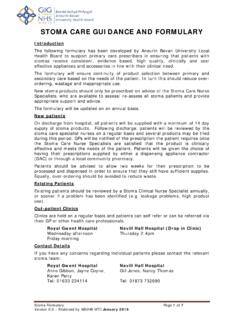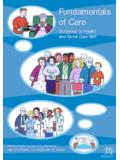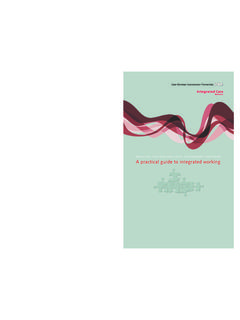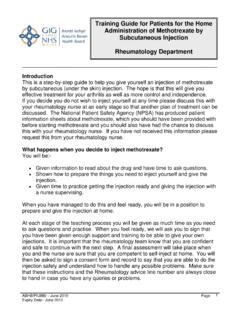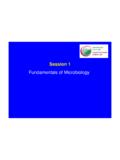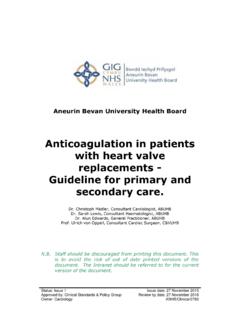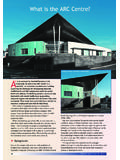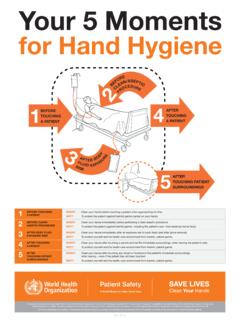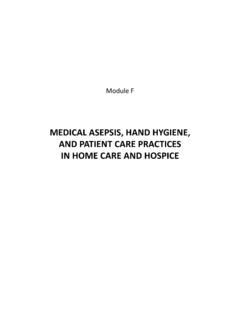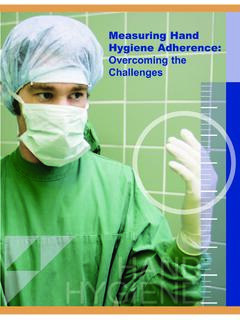Transcription of Hand Hygiene audit - NHS Wales
1 National Public Health Service Hand Hygiene audit Author Primary Care Quality & Information Service Date Oct 2008 Status Final HAND Hygiene Quality improvement toolkit for Infection Prevention & Control in General Practice Author: Primary Care Quality & Information Service Date: October 2008 Version: Final Intended Audience: Public (Internet) / NHS Wales (Intranet) / NPHS (Intranet) / LHB /General Practice Purpose and Summary of Document: This simple hand Hygiene audit is for use by all staff working in general practice that have patient or specimen contact .The purpose of this observational audit is to support practices in assessing the quality of hand Hygiene technique performed by staff and in working with staff to improve their hand Hygiene technique. Completion of this audit would constitute a suitable piece of Continuing Professional Development that could be included within the GP appraisal process or Personal Practice Development. This straight forward audit is designed to prompt reflection Publication and Distribution: Publication in NPHS Document Database (Consultant infection control nurse) Link from NPHS e-Bulletin Version 0e Page 1 of 16 (Intranet) NPHS (Intranet) / PCQIS / LHB Intended Audience: Public (Internet) / NHS National Public Health Service Hand Hygiene audit Author Primary Care Quality & Information Service Date Oct 2008 Status Final Preface Quality improvement toolkits The Primary Care Quality and Information Service (PCQIS) have developed quality improvement toolkits to assist practices in collating and auditing information.
2 The quality improvement toolkits produced support the specification requirements of the latest evidence based practice. They should be seen as good practice and cover areas that some or even all practices may not be achieving at this stage. It is not expected that all the criteria within this audit will be achieved in year one therefore the PCQIS suggests that the toolkits should be used to aid development within the practice. You can access other quality improvement toolkits that support enhanced services and National Service Frameworks from the National Public Health Service (NPHS) website: Intranet Version 0e Page 2 of 16 (Intranet) NPHS (Intranet) / PCQIS / LHB Intended Audience: Public (Internet) / NHS National Public Health Service Hand Hygiene audit Author Primary Care Quality & Information Service Date Oct 2008 Status Final CONTENTS Page Preface 2 1 Introduction and background 4 2 Aim of the quality improvement toolkit 4 3 Methodology 5 4 Data entry template 6 Appendix 1 - 10 steps to effective hand Hygiene 7 Appendix 2 - Effective hand Hygiene information 9 Appendix 3- Quality improvement toolkit evaluation form 11 Appendix 4- Summary collection sheet 12 Appendix 5- WHO Five moments for hand Hygiene 15 References 16 Version 0e Page 3 of
3 16 (Intranet) NPHS (Intranet) / PCQIS / LHB Intended Audience: Public (Internet) / NHS National Public Health Service Hand Hygiene audit Author Primary Care Quality & Information Service Date Oct 2008 Status Final 1 Introduction and background Hand Hygiene is the entrance door to better infection control and safer patient care 4 Health care-associated infections (HCAIs) remain a major cause of morbidity, mortality, and excess health care cost despite concerted infection control efforts over nearly a half-century. Patients in Wales should expect to receive care and treatment in a way that does not pose a greater risk to their health3 A key objective of the Healthcare Associated Infections Community strategy for Wales - (2007) is to introduce a clean culture throughout the healthcare system and to ensure that Hygiene and infection prevention and control are embedded in the management agenda and the accountability of all The importance of hand Hygiene in the healthcare environment is considered a priority and the need for its emphasis in the primary care setting is recognised 7.
4 Hand Hygiene is the most effective measure to prevent transmission of microorganisms. Adequate hand Hygiene can be achieved by hand washing with soap and water--or by the use of an alcohol-based hand-rub solution9. It is an infection control practice with a clearly demonstrated efficacy, and remains the cornerstone of efforts to reduce the spread of infection4,8. Technique is of crucial importance in all hand hygiene12. All Primary care staff Involvement It is important that all staff develop awareness and knowledge of infection control processes and procedures. The practice could undertake a baseline audit to identify if practice staff have received training in hand Hygiene procedures. This simple audit will help gain a baseline understanding of whether staffs are performing effective hand Hygiene techniques. The audit will also provide an opportunity for staff to reflect on their own hand Hygiene practices, improving their technique where required.
5 Nominated lead for infection control The practice must nominate a lead for Infection Prevention and Control, someone who must have received training in infection prevention and control to achieve competence. Central to the role of the nominated lead will be to ensure compliance with standard infection control precautions (SICP s), direct an ongoing audit programme and guarantee that improvements in practice, where identified are implemented. The nominated lead will be a role model who can influence the culture in their workplace to encourage behaviour change in the prevention and control of infection 2 Aim To identify effective hand preparation and hand decontamination of all staff within General Practice to minimise the risk of transmission of infection. Version 0e Page 4 of 16 (Intranet) NPHS (Intranet) / PCQIS / LHB Intended Audience: Public (Internet) / NHS National Public Health Service Hand Hygiene audit Author Primary Care Quality & Information Service Date Oct 2008 Status Final 3 Methodology Observational audit Compile a list of all staff trained and untrained in effective safe hand Hygiene procedures Identify a practice lead for infection prevention and control to carry out an observational audit or encourage staff to buddy with another colleague to perform the audit Observe one staff member at a time, Collect relevant data for each individual staff and record using the data collection sheet provided ( page 6) Feedback the results immediately to the staff member Where 100% is not achieved by an individual they should be advised/encouraged to reflect on their practice.
6 The audit should be repeated at an agreed time until 100% is achieved Aggregate data from completed audits for analysis using the summary sheet (Page 12) The audit Lead / Team should reflect on the overall results of the audit , review themes identified from the analysis and recommend any changes to practice considered appropriate A repeat of the overall audit within the practice should be undertaken as part of the practices infection control audit programme Version 0e Page 5 of 16 (Intranet) NPHS (Intranet) / PCQIS / LHB Intended Audience: Public (Internet) / NHS National Public Health Service Hand Hygiene audit Author Primary Care Quality & Information Service Date Oct 2008 Status Final Version 0e Page 6 of 16 Intended Audience: Public (Internet) / NHS (Intranet) NPHS (Intranet) / PCQIS / LHB Criteria All criteria are essential Achieved Not achievedHand washing Hand Preparation hands and wrists are free from watches and jewellery (non stoned wedding rings are acceptable) Nails are short and without nail extensions and varnish Sleeves are short or rolled up during hand washing Cuts are covered with a waterproof dressing Hand washing technique CCCC1.
7 hands are wet under continuously running water 2. Warm Water is used to wash hands 3. Dispensed liquid soap is used 4. Liquid soap is applied to wet hands 5. hands are rubbed to create a lather copy of the 10 steps to effective hand Hygiene wall chart is prominently displayed at each wash basin (See appendix 1) lather is rubbed over all surfaces of the hands for 10-15 seconds, including the thumbs, between the fingers, fingertips and the wrist (demonstrating the 10 steps to effective hand Hygiene technique (See appendix 1) 8. Hand are rinsed thoroughly under running water Drying of hands are turned off using wrist/elbow levers or using a clean paper towel 10. hands are dried using paper towels Alternative Hand Hygiene using Alcohol based hand rubs/ Hand Preparation hands and wrists are free from watches and jewellery (non stoned wedding rings are acceptable) Nails are short and without nail extensions and varnish Sleeves are short or rolled up during hand Hygiene Cuts are covered with a waterproof dressing hands are visibly clean Alcohol based hand rub is dispensed onto the hands Alcohol hand rub is rubbed onto the hands ensuring all surfaces are covered by the alcohol hands are rubbed until the alcohol has evaporated Definition of Achieved: criteria met in full: Not Achieved.)
8 Criteria not met 4 Hand Hygiene Quality Improvement audit for Primary Care Individual staff data entry template checklist Staff Practice Infection control The practice lead is an individual who /is undertaking or has completed the healthcare associated infection (HCAI) champion E-learning programme and who should be the person observing hand Hygiene technique. National Public Health Service Hand Hygiene audit Appendix 1 The following guide has been adapted from the RCN and Kimberly-Clark hand washing Guide (RCN Good Practice in Infection Prevention and Control 2005) 10 steps to effective hand Hygiene To ensure that all parts of the hands are cleaned properly the following technique should be followed. The same principles can be applied when using alcohol hand rubs 1 2 3 4 Wet hands and forearms Soap up and rubbing palm to palm Rub with fingers interlaced Massage between fingers.
9 Right palm over back of Left hand, left palm over back of right hand Author Date Status Primary Care Quality & Information Service Oct 2008 Final Version 0e Page 7 of 16 Intended Audience.
10 Public (Internet) / NHS (Intranet) NPHS (Intranet) / PCQIS / LHB National Public Health Service Hand Hygiene audit Author Primary Care Quality & Information Service Date Oct 2008 Status Final Version 0e Page 8 of 16 Intended Audience: Public (Internet) / NHS (Intranet) NPHS (Intranet) / PCQIS / LHB 5 6 7 Scrub with fingers locked Rub rotationally with thumb Rinse thoroughly Including finger tips locked 8 9 10 Dry palms using paper towels Work towel between fingers Dry around and under nails National Public Health Service Hand Hygiene audit Appendix 2 Effective hand Hygiene Information Importance of Hand Hygiene Hand Hygiene is considered to be one of the most common ways that transmission of infection occurs.
